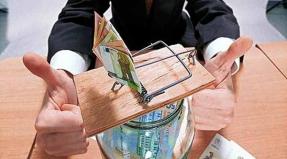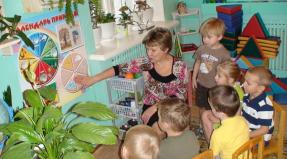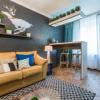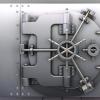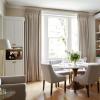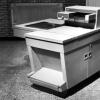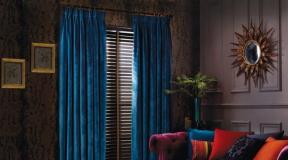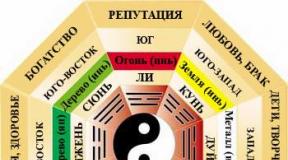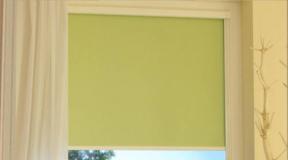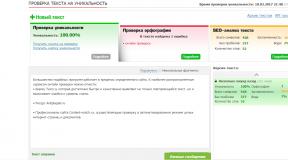San sebastian beach, spain. San Sebastian, Spain. Where Spanish kings rest. Entertainment and attractions of San Sebastian
San Sebastian in Spain is considered an elite resort town. France has Nice, Spain has San Sebastian. Although, perhaps, it would be more correct to compare it not with Nice, but with Biarritz: both of them are located on the shores of the Bay of Biscay, at a distance of 50 km from each other.
Both the Spanish kings and the dictator Franco loved to rest in San Sebastian. And Queen Isabella II “opened” it to the sophisticated public in the middle of the 19th century. At that time, there was a military fort, and with it - a fishing village.
Indeed, the place was ideal for a resort: a quiet secluded semicircular bay with a wide strip of sandy beaches on both sides ended in hills, in the middle of the bay a rocky island of Santa Clara rose from the water, which closed it from the open water space.
Soon, Queen Maria Cristina built her residence here, and the city began to fill with an aristocratic public. On the site of a military fishing settlement, a luxurious resort town was erected. In the toponomy of the city, you will often come across the name "Maria-Christina" - in memory of the queen, under whom, in fact, the city arose in its current role.
San Sebastian quickly became fashionable. And he does not leave it to this day.
San Sebastian at the beginning of the last century
San Sebastian is located on the shores of the Atlantic Ocean, in Basque Country, 14 km from the Spanish-French border, and has a double Basque-Spanish name: Donostia-San Sebastian.
There are not too many Russian tourists here - in contrast to the Mediterranean coast of Spain, long ago and thoroughly mastered by our compatriots. I have not seen package tours to San Sebastian. Yes, he, in general, and little associated with a traditional beach resort, in which along the coast stretch hotels with balconies overlooking the sea, where the beaches are lined with sun loungers, and along the promenade there are cafes mixed with boutiques.
San Sebastian is a solid city, quite homogeneous in style, mainly 5-6 floors, which acquired its present appearance in the Art Nouveau era and subsequently adjusted to the given style. Most of the buildings in the center and in the Old Town are built of local light yellow stone.

Typical color of buildings
Several times I have come across an opinion that supposedly San Sebastian is similar to Paris. It is similar to Paris in the same way as any European city formed in the 19th century, similar to another European city of the same time (as you know, Paris was radically rebuilt in the 19th century by Baron Haussmann). In my opinion, San Sebastian is more like Madrid or. Comparison with Paris is not very appropriate here.

Isn't it quite in the spirit of Madrid?
How to get to San Sebastian
1.San Sebastian has its own airport near the village Odnorribia(Hondarribia), but I did not come across direct flights from Moscow. A transfer in Madrid is usually added. The cost of such flights is in the region of 25 thousand rubles. Flights are operated by Iberia airline.
2. The flight to Biarritz(50 km from San Sebastian).
3. A good option is a flight to Bilbao... Air tickets - about 17-18 thousand rubles. Bilbao has a large international airport. Distance to San Sebastian - 100 km.
From Bilbao you can take the local train to San Sebastian. Check the Euskotren website for the schedule (when choosing your place of arrival, look for Donostia - San-Sebastian). Trains leave Bilbao every hour and travel to Donostia for 2 hours and 40 minutes. The fare is 6.30 euros.
In this case, the bus will be preferable (the schedule is on alsa.es). It goes 1 - 1.15 and costs 6.50 euros.
Pesa buses run directly from Bilbao Airport to Donostia. The schedule is on the Pesa website. The bus runs at 1.15, the ticket price is 12 euros.
4. Many people choose to fly before Of Barcelona(tickets around 15 thousand). From Barcelona to San Sebastian - 400 km. They can be overcome either in a rented car, or by train or by bus.
For train timetables and fares, see renfe.com.
The train from Barcelona to San Sebastian takes from 5 and a half hours to 7 and a half (depending on the type). The fare is from 35 euros to 48. Several trains a day.
Alsa buses (alsa.es) reach San Sebastian in 8 hours. The fare is 38 euros.
5. Approximately the same prices for train and bus from Madrid to San Sebastian. And about the same time.
To choose the best option for getting to San Sebastian from Bilbao, Madrid or Barcelona, use the website. On the same site, you can buy tickets online.
Use the price calendar to see which months and days have the best fares and compare prices for flights to Madrid, Barcelona and Bilbao.
Surriola beach and Kursaal
To begin with, let's take a look at San Sebastian from the most advantageous side - we will walk along the coastline. Let's go from east to west.
The city has three sandy beaches and two hills with observation decks.
The first beach, Zurriola, is occupied by surfers. From morning till night on the nearby streets you can meet people with boards under their arms, hurrying to the ocean or returning from there.
However, ordinary people swim along the edges of the bay. Since we lived a stone's throw from Zurriola, we also swam here.
The black-tiled embankment is lined with black stone sculptures. The embankment with sculptures matches the Kursaal Palace of Congresses and Auditorium located right there, a modern building of complex shape, built for various cultural events. In particular, film festivals and jazz festivals are held here every year.
The Kursaal stands simultaneously on the ocean and on the river, at the confluence of the Urumea River into the Atlantic Ocean.
The Urumea River divides the city into two parts. Along the river, opposite each other, are the most representative buildings of San Sebastian.

Yellow house with a dome - hotel "Maria Christina"

Opposite the Victoria Eugenia Theater
There are beautiful bridges across the river.

Maria Cristina bridge
We cross the river over the Kursaal bridge and find ourselves on the green and spacious boulevard of Donostia. We go to the tourism office and take a map of the city.
Old town and Urgul hill
Donostia Boulevard runs along the isthmus of the peninsula stretched into the ocean.

Boulevard Donostia
The peninsula ends with Urgul Hill. The Old Town stretches between the hill and the boulevard of Donostia.
There are not many attractions in San Sebastian. Yes, and the Old Town can be called "old" at a stretch.
After Napoleon's invasion, not much survived here: two churches and about thirty houses. Let's say this Gothic church of San Vicent is from the 16th century.

And the nearby church of Santa Maria del Coro is on the 18th.


Magnificent baroque portal
Between them, in the depths of the houses, there is a rectangular parade de la Constitution, the main square of the Old City, where bullfights were once held.

And here is one of the old houses

Another attraction of San Sebastian is the San Telmo Art Museum, which is located in the building of a former monastery.

Near the San Telmo Museum, the ascent to the Urgul Hill begins. There are several ascent options to the top of the hill, in particular one of them is located behind the church of Santa Maria del Coro.

We rise to the level of church bells
Urgul hill is covered with forest, paths are laid through the forest.

One of the paths leads to a modest cemetery of English sailors (they defended the fort from Napoleonic soldiers)


At the top is a former English fortress with cannons. There is a small museum in the fortress. It is free, but when passing through the museum, an employee asks what country you are from, and notes (apparently, for statistics).

The museum houses an exposition dedicated to the history of the city and the fortress. Samples of guns, military uniform, schemes.
Photos in the museum

Bathing suits of the beginning of the last century

From the museum, a staircase leads to the observation deck, to the foot of the statue of Christ. This statue can be seen from many points of the city.

An excellent view of the city opens from the observation deck.


Buon Pastor Church
One can see a curved bay with a strip of yellow beaches abutting another hill - Igeldo.

We go down to the other side of the hill and find ourselves near the local Aquarium and Maritime Museum. The port is located a little further.
The beaches of San Sebastian La Concha and Ondorreta
After passing the port, we go to the most remarkable building of San Sebastian, which has become its hallmark - the City Hall. In the past, it housed a casino. (There is a casino in San Sebastian even now, only it is located in a different place).

City Hall, or Ayuntamiento
There is a pretty park in front of the City Hall. And in general, this part of the city is the nicest. The wide and spacious La Concha beach ("Shell") begins here, and a promenade stretches from the city hall along the beach.


Statue of Jesus between the towers of the City Hall. People can be seen on the observation deck


La Concha beach

The clock on the embankment


This elegant pavilion housed the royal baths.

Hotels stretch on the left side.

Koncha Beach rests against a rocky ledge. A tunnel has been cut through the rock.

Above this ledge is Miramar Castle, the former royal residence of Queen Maria Cristina, built in 1893 in the English style.

Now the castle is open for free visits. Inside, everything is pretty simple, no frills. The residence is "decorated" with modern installations.
Flowerbeds in front of the castle

Ondarreta Beach begins behind the rocky outcropping.

Ondarreta beach
And in front of him is a quarter of private villas.



Ondarreta Beach is 600 meters long and abuts the Igeldo Hill.
The hill can be reached by funicular (for 1.75 euros). However, it will not take long ourselves. We took a funicular upstairs and went back down on foot.

Igeldo above the Urgul hill. The statue of Christ is below.

Between the hills of Igeldo and Urgul in the center of the bay, a small island of Saint Clara, popularly nicknamed the "Turtle", sticks out of the water. On it, they say, there is also a small beach.

At the top of the Igeldo, there is a cafe and an amusement park. They even arranged a river, along which one can sail on a boat, and all this is on the edge of the abyss.
How do you like a ride on such a train? I think the kids will get a strong impression.


A walk along the ocean from one end of the city to the other can take about two hours.
City center. Buon Pastor Cathedral
The beaches and promenade of San Sebastian are by far the most attractive part of the city. However, it is pleasant to walk inside the city blocks.
The city, as I have already mentioned, was built in the Art Nouveau style. This style is characterized by smooth curved lines, floral ornaments, fluidity. Wandering around San Sebastian, you will stumble upon expressive details at every step. It is a pleasure to look at them!





There are many parks, fountains, squares.



Gipuzcoa Plaza - park quarter



The dominant feature of this part of the city (the area is called Amara) is the Cathedral of the Good Pastor - Buon Pastor. The cathedral was built in the neo-Gothic style in 1897, all under the same queen Maria-Christina. They say that the architect Echave made his project with an eye on the Cologne Cathedral.

Sunlight, penetrating into the cathedral through the stained-glass windows, paints the interior of the church.


Around the cathedral, city life is in full swing; this is, one might say, the heart of the city.
From Buon Pastor Cathedral, the wide Loyola Kalea, filled with shops, begins.
The building of the cultural center is located behind the cathedral. And behind it is a pedestrian street with restaurants. And here we smoothly move on to the next section.
Food and drinks. Pinchos, tapas, pacharan
The basis of the local catering is pintxos and tapas. The line between them is unsteady, but it is there.
Tapas is a snack for one clove: a tartlet, a rosette with olives, nuts. Often their cost is included in the price of the ordered drink. So, at the bar, when ordering a mug of beer, they gave me a plate with slices of chopped ham. Translated "tapas" as "lids" - historically a glass of wine was covered, like a lid, with a small sandwich.

Tapas in the bar
If tapas is a common Spanish phenomenon, then pinchos was invented in San Sebastian. "Pintxos" - Basque means "skewers" or "pins". Like, these are pieces of food strung on a skewer. But often mini-portions of ordinary dishes also belong to the category of pintxos. So, trying to understand the menu, I saw the same names in the main dishes section and in the pintxos section. Only the main course cost about 12 euros, and the pintxos with the same name - about 3. So there is a great opportunity not to take a "pig in a poke", but to try a mini portion of this "cat".
The cost of pintxos is 2-3 euros. For a full meal, 3-4 things are quite enough. So, on the first evening I ordered 4 pintxos. They brought me a piece of beef stew, two large mussels in batter, some more meat and a goose liver sandwich. Foie gras was the most delicate, and afterwards I always took such pintxos on occasion. True, in the first cafe it turned out to be the most delicious.
As in all of Spain, the menu of the day is in use here - “ menu del dia". It includes the first and second courses (a choice of 3-5 positions), wine, dessert and sometimes coffee. It turns out to be profitable. Such a menu of the day costs 9-15 euros.
Well, and, of course, in San Sebastian you need to eat fish and seafood ("Pescados y mariscos"). There are many restaurants with such signs in the port area, next to the Maritime Museum and the Aquarium. Some have a menu in Russian.

Winemaking in the Basque Country has a long tradition, so I will not give any special recommendations. I think that any of the local wines will not cause disappointment. I will only say about such local drinks as chacoli and pacharan.
Chacoli ("txacoli") is a young, slightly carbonated wine with a greenish hue, very pleasant to the taste. Pacharan ("patxaran") is a symbiosis of anise liqueur with thorn liqueur. It seemed too sweet to me, but many people like pacharan.

As in all of Spain, siesta is sacredly observed in the Basque Country. Try not to delay your lunch - restaurants usually close at 3 pm.

I was in San Sebastian three times - twice in August and once - on New Year's holidays. In summer both times the ocean was warm and calm (unlike Portugal and). I was surprised that in winter there are enough people here too. Vacationers strolled along the embankment, looked into shops, sat in a cafe. Although, of course, the evening January San Sebastian looked sad, like any resort town in the off-season.
But in the summer it is pretty here. So if you want to go to the ocean, San Sebastian is not a bad option at all. No wonder he was so fond of the Spanish kings.
In the following stories, read what you can see in (in particular - on
Bicycle, scooter, ATV and motorcycle rental -
If you would like to receive messages when new stories appear on the site, you can subscribe.
A beautiful seaside town and prestigious resort in northern Spain. It is known for hosting international film and jazz festivals, rich architectural heritage and gastronomic delights.
The Town Hall (Ayuntamiento) of San Sebastian is an elegant palace with turrets in front of Alderdi Eder Park. It was built in 1882 for a casino. When the gambling business was closed, the building served as a hospital, festival hall, and tourism center. The City Hall has occupied the palace since 1947.
Piazza Constitución is a square space connected by arches to the neighboring streets. Place of gathering of tourists, holding noisy city holidays, gastronomic festivals. Plaza Nueva (old name) was built up in 1723. After a military fire in 1813 and a grandiose reconstruction, it bears the name Plaza de la Constitución. Here you can see the old town hall, which now houses the library.
Cathedral of the Good Shepherd
Iglesia San Ignacio is a 19th century church dedicated to Ignatius Loyola, a revered saint born in Guipuzcoa. The neo-Gothic cathedral in the heart of Parte Vieja was reconstructed in 1932. After the reconstruction, its bell tower became higher. The best organ of the city plays in the San Ignacio temple.
Church of San Vincente
The three-story Miramar Palace is the former family estate of Count Morian, redeemed by the royal family for the summer residence of Queen Maria Cristina. The Palacio de Miramar was renovated in 1893 according to the design of Selden Warum. Now the gardens of the palace are open to the public, and social events are held in the building. Miramar is located near La Concha beach, on Paseo de Miraconcha boulevard.
Amusement Park "Monte Igeldo"
The "Monte Igueldo" amusement park is located at the top of the coastal hill. The history of Parque Atracciones Monte Igueldo dates back to 1911. The first to build a fashionable club, later a park was laid out nearby. At the top of the hill there is an old lighthouse-museum, next to it there are roller coasters, vintage carousels, labyrinths, observation terraces overlooking the Concha Bay.
Opening hours:
Opening hours vary from time of year, month, weekends and holidays. You need to check your date on the website monteigueldo.es.
The observation deck is open from 10:00, in the summer months until 20:00 (22:00).
The funicular is open during the summer months from 11:00 (10:00) to 20:00 (22:00).
The attractions are open on weekends 11:30 - 14:00 and 16:00 - 20:30. From June 19 to September 10, they are open every day.
Ticket prices:
For each attraction in the park, a ticket must be purchased separately. Prices from € 1 to € 5.
You can climb Mount Igeldo by funicular. General ticket for the funicular in both directions and the observation deck: adults - € 3.15, children - € 2.35.
Separate observation deck - € 2.
"Crest of the Winds" is a large-scale sculptural composition by E. Chillida (1976). The Peine del Viento group is visible from different points of San Sebastian. It consists of three steel structures cut into the Igeldo slope. The waves crash against the metal masses of the ridge.
Anoeta stadium
To get around the city, you can purchase a tourist card - the San Sebastian Card. There are cards: for 6 trips - € 9 and for 12 trips - € 16. Both cards are valid for 10 days. At tourist offices, returning the card in excellent condition, refund € 0.50. Several people can ride on one card!
It is not profitable to drive on the card at night: 2 trips are deducted from the card for travel at night.
In addition to the indicated number of trips by public transport, the San Sebastian Card provides various discounts at museums, restaurants, shops, and the funicular. Complete list →
The card is sold all year round at the Tourist Office of San Sebastian at Alameda del Boulevard, 8, Donostia. In summer they are sold in Plaza Cervantes. More cards can be purchased at some hotels: Amara Plaza, Astoria 7, Codina, San Sebastián, Hesperia Donosti, Green Nest, Avenida, Camping Igueldo, Camping Igara.
Tourist card Basque Card
To travel not only in San Sebastian, but throughout the province of Guipuzcoa, there is a Basque Card tourist card. Two types are offered for € 26 and € 41. They can be purchased at the Tourist Office at Boulevard Zumardia, 8. If the card is returned in perfect condition, it will be refunded € 0.50.
The cards are valid for 10 days. Several people can travel on one card in San Sebastian, except for the Euskotren trains.
Advantages:
- one trip by city buses San Sebastian dbus: day - € 1.15, at night - € 2.10.
- discount on Lurraldebus intercity buses in Guipuzcoa
- discount on Euskotren trains in Gipuzcoa - for one person only (! No discounts on Renfe trains)
- discounts on museums, restaurants, shops, excursions to the city of San Sebastian and attractions in the surrounding area. Complete list →
Funicular Monte Igueldo
The funicular is the most popular means of transportation from the Ondarreta beach to Mount Igeldo. Funicular Monte Igueldo, opened in 1912, was the third in Spain. To this day, the original mechanisms and external design of old cars have been preserved. In 3 minutes it takes tourists to the park on Mount Igeldo. The funicular leaves every quarter of an hour.
During the summer months, the funicular runs from 11:00 (10:00) to 20:00 (22:00). The ticket for the funicular (round trip) includes a ticket to the observation deck on Mount Igeldo: adults - € 3.15, children - € 2.35. With the San Sebastian Card, an adult ticket is € 2.35.
Trains
San Sebastian has two rail carriers: the Spanish state-owned company Renfe, the main station of the Gare du Nord (Estación del Norte (Donostia)), and the Basque EuskoTren, the main station of Estación de Amara.
Renfe
The Renfe railway network is represented by one line C-1 Irún - Brinkola. Ticket prices depending on the zones.
San Sebastian North Station provides direct connections to Madrid and Barcelona. Departure of trains 2 times a day. Travel time: to the capital of Spain - 5 hours 20 minutes, to the capital of Catalonia - 5 hours 50 minutes. Approximate ticket price: to Madrid - € 60 - € 75, to Barcelona - € 65 - € 85.
EuskoTrena
The network of the Basque company EuskoTrena in San Sebastian is represented by three lines:
- E1: Bilbao - Donostia / San Sebastián
- E2: Lasarte-Oria - Hendaia
- E5: Amara - Altza
Tariffs for Gipuzkoa, zones 5-8:
How to get to San Sebastian from the airport?
San Sebastian airport
San Sebastian Airport (Aeropuerto de San Sebastián, EAS) is located 20 kilometers, near the city of Hondarribia, which is on the very border with France.
Ekialdebus buses run from the airport. It takes about an hour to get to the center of Donostia, the fare is € 2.45.
- line E20 (at night E77) connects Hondarribia airport with San Sebastian (Gipuzkoa square) and passes through the municipalities of Rentería, Errenteria and Pasajes, Pasaia.
- line E27 (at night E77) - this is the same E20, but valid on Saturdays, Sundays, holidays and additionally passes through the city of Irún.
- line E21 connects Ondarribia airport with San Sebastian (Gipuzkoa square) via the AP8 motorway - journey time 30 minutes.
- lines E23 or E24 (in the morning) the rest of the time - E28. The route passes through the center of San Sebastian, its districts - Riberas de Loyola, Amara and Antiguo, and further on the AP8 motorway. The E28 bus additionally enters the city of Irún.
Bilbao Airport (BIO) - 105 km
Bilbao International Airport (Aeropuerto de Bilbao, BIO) is located 105 kilometers from San Sebastian. From it to San Sebastian (stop - Parada De Autobuses Pio XII Donostia) there is a Pesa intercity bus - DO50B. The ride is 1 hour 15 minutes, the ticket costs € 17.10.
What to see in the vicinity of San Sebastian?

Santa Clara Island
Sculptor Eduardo Chillida Museum-Park
City of Ondarribia
Sanctuary of Saint Ignatius of Loyola
Ignacio Zuloaga House Museum
Fort San Marcos
Basque Railway Museum
Basque Coast Geopark
San Sebastian - formerly a fishing village and the largest exporter of olive oil to England and France, and today the largest city Basque countries, one of the most elegant and fashionable Spanish resorts and a surfer's paradise.
The origin of the resort life of San Sebastian is due to the wife of Emperor Napoleon III, Eugenia Montijo, who first brought the imperial court here. Modern San Sebastian is a resort mainly for Europeans: the French or the British rest here, but you can hardly find Russians and Asians here.
Along with Madrid and Barcelona, San Sebastian is considered one of the most expensive cities in Spain.
Rest from 42,000 rubles. for two. The most delicious offers for the summer 2019! Interest-free installment plan for tours! Popular resorts and verified hotels. ,. Discounts for children up to 30%. Hurry up to book! Buying tours. Departures from Moscow - get a discount right now.
How to get there
By plane
San Sebastian has its own airport, but there are no direct flights from Russia to this city. With a transfer in Madrid or Barcelona, "Iberia" and "Vueling" fly here, the cost of tickets is from 300 EUR (round trip). The airport is located 22 km from the city center. You can get from there to the center by regular buses (they run often, the fare is 1.65-2.35 EUR) or by taxi (8-10 EUR). Prices on the page are for September 2018.
There are four more airports in the vicinity of San Sebastian: in Bilbao, Vitoria, Pamplona and Bjarritz.
By train
Air communication between San Sebastian and Russia is not very convenient, so many tourists prefer to fly to Madrid or Barcelona, and from there get to the city by land transport.
- The train from Barcelona runs three times a day: at 7:30, 14:10 and 15:30. Travel time is from 5.5 to 7 hours, depending on the train, the fare is from 25.90 EUR one way.
- Trains from Madrid run 5 times a day, the first at 7:30 and the last at 17:35. The journey takes about 5 hours, the fare is from 22.15 EUR one way.
San Sebastian is a large city, so trains run here from all over Spain, France, and there are also night trains from Paris and Lisbon.
If you are coming from France, be careful as this country has its own San Sebastian and it is a completely different city.
By bus
Bus service in the Basque Country, as well as in Spain in general, is well established. Buses are traditionally cheaper than trains, but the journey will be longer. The road from Bilbao to San Sebastian will take about 1.5 hours and cost 6-7 EUR one way. The bus from Madrid to San Sebastian takes 6-6.5 hours, the ticket costs from 15 EUR one way.
Search for flights to Barcelona (closest airport to San Sebastian)
Weather in San Sebastian
The climate in San Sebastian is moderate Atlantic. In summer, there is no extreme heat, the temperature rarely rises above +25 ° C. The maximum number of tourists falls in the period from May to September, at this time it is almost always sunny here, but in winter and in the off-season it is often rainy.
By mid-November the weather gets worse, and in winter there is usually no more than + 7 ... + 10 ° C. In the second half of April, it becomes warm again - the air warms up to +20 ° C, and everything blooms.
San Sebastian is located on the ocean, so the water in the local bays is not as warm as in other Spanish resorts. A comfortable swimming temperature is from July to September.
The Atlantic climate is quite unpredictable: in the offseason, it is equally likely to be cloudy and rainy, as well as sunny weather.
Hotels in San Sebastian
Most of San Sebastian's hotels are concentrated in the city center (El Centro). The center, in turn, is usually divided into two parts: the Old Quarter (parte vieja) and Miraconcha (Miraconcha).
The main city attractions are located in the Old Quarter, it is very colorful and beautiful, and there are many bars and restaurants. However, it can be noisy at night, and as many hotels are located in historic buildings, there are interruptions in hot water and other amenities.
In the Miraconcha area, hotels are more modern; it is here that the main city beach and the beautiful promenade along it are located. Accordingly, prices in this quarter are the highest in the city.
There are several interesting areas outside the historic center. It is also convenient to live in, there are relatively few tourists, and prices are slightly lower than in the center:
- Amara vieja (Old Amara) - this residential area adjacent to the center is considered prestigious among the local population.
- Gros is the city's shopping center with many shops, street cafes and inexpensive bars. It is here that the surfer beach Zuriola is located.
- El Antiguo is a quiet and peaceful area, which is often chosen by families with children, here is the Ondarreta family beach.
- Eguia is a green area with the large city park Christina Enea and the main train station.
The most luxurious hotel in San Sebastian is Maria Cristina, a luxury collection 5 *, the only five-star hotel in the city, located overlooking the Bay of Biscay. From June to October, the hotel restaurant is run by Michelin-star French chef Hélène Darroz. A double room here costs from 500 EUR per day.
A 4 * hotel in the city center will cost from about 80-150 EUR, a good "three-ruble note" can be rented from 60 EUR, a room in a guest house - from 45 EUR per day for a double room, and a bed in a hostel - from 20 EUR per night per person.
San Sebastian beaches
Famous Playa de la Concha(Playa de la Concha) is a crescent-shaped hotel located in the city center in a quiet bay surrounded by lush tropical vegetation. Tourists and locals alike love it for its well-groomed and beautiful views. The hydropathic center la Perla is located right on the shore, offering health and beauty treatments.
In the center of the shell-shaped bay is a small islet of Santa Clara with a small lighthouse at the top, surrounded by many sailing yachts. On both sides of the bay there are two mountains: on the left there is a beautiful castle and an amusement park, on the right - a statue of Christ.
Playa de Hondaretta(Playa de Ondaretta) is a quieter and more peaceful clean beach with coarse yellow sand. This is a popular place for a relaxed family vacation, also there are often waves, and then surfers come to this beach. It is separated from Playa de da Concha by the Pico del Loro rock: for the convenience of tourists, a tunnel has been cut through it.
Beach Playa de Zurriola(Playa de Zuriola) was formerly known as Playa de Gros. It is open to all winds and therefore is very popular among surfers, there are always a lot of young people here. In 1994, a breakwater was built here for safety, and the beach area was expanded by adding sand. There are sports fields, many beach bars, surf schools and board rentals, as well as concerts, festivals and parties.
Previous photo 1/ 1 Next photo
Shopping in San Sebastian
The people of San Sebastian have a reputation for fashionistas in Spain. In the Old Town there are many shops and boutiques of both luxury and middle price segment. Most of the presented brands are Spanish (some of them do not reach Russia), but there are other popular European brands. Most shops are located on Libertad Avenue.
Spanish delicacies are best bought at the Mercado San Martin and Mercado de la Bretxa food markets, while interesting souvenirs at lower prices than other shops are sold at Akuna matata.
Tours from 50,000 rubles. for two. Summer 2019! An unforgettable vacation in the best resorts:,. Tours in installments - no overpayment! Treat yourself and your loved ones. Hurry up to book! Discounts for children up to 30%. Buy a tour. Departures from Moscow - get a discount right now.
Cuisine and restaurants
Basque cuisine is considered the best in all of Spain. It is in San Sebastian that there are several restaurants that have earned a Michelin star.
There are only two restaurants in the world that have been awarded three Michelin stars: one in Paris and the other in San Sebastian.
The restaurants in San Sebastian serve traditional Basque dishes, seafood in all sorts of variations and the famous pintxos. Pinchos is a local variety of Spanish tapas, small sandwiches or canapes with all kinds of fillings. They are served here everywhere - from small eateries to elegant restaurants of signature cuisine. It is customary to wash them down with beer, wine, in particular the traditional Basque white sparkling wine Txakoli, or apple cider (sidra). It is made here according to a special traditional recipe and sold in the same bottles as cava (Spanish sparkling wine).
Previous photo 1/ 1 Next photo

Excellent pintxos are served at Casa Valles gastropub next to the Duomo. Bar Nagusia on the street of the same name is a real pintxos museum, which has perhaps the largest selection in the city. Prices start at 2.90 EUR per piece. For seafood, you should go to La Mejilonera restaurant, for traditional Basque cuisine (there is also a lot of seafood, and meat is excellently prepared) - in La Cuchara de San Telmo or La Zurri Jatetxea in the Old Town.
Arzak is the very restaurant that has been awarded three Michelin stars. This is a family-run restaurant with new Basque cuisine, the menu is updated every six months, the specialty is smoked white tuna with fresh figs and pine nuts. The tasting menu starts from 200 EUR per person, excluding drinks.
In more democratic establishments, it is quite possible to dine for 50 EUR for two; at lunch, many of them offer a set menu that costs from 10 EUR per person. You can also have a snack in pintxos bars for 10 EUR per person, excluding drinks.
Guides in San Sebastian
Entertainment and attractions of San Sebastian
Despite the fact that San Sebastian has repeatedly burned down almost to the ground in its entire history, some architectural monuments have been preserved here. In the Old Town, called Alde Saharra, it is worth visiting the Basilica of Santa Maria del Coro (named after the patron saint of San Sebastian), built in the Baroque style; the church of St. Vincent - a neo-Gothic building of the 19th century, and in the ethnographic museum of San Telmo, in the building of which at the foot of Mount Urgul in the 16th century there was a monastery. Today, historical evidence of the richest Basque culture is kept here, and the walls of the museum are painted with frescoes based on the history of the region and Basque legends.
One of the most unusual museums in the city is the Sea Palace-Aquarium near the port. In fact, these are two small museums in one - the first tells about the history of Basque fishing, the second about the naval history of the region. The museum has transparent tunnels, passing through which you can watch sharks and other marine life.
The old quarter in the city center (parte vieja) is one big attraction in itself. In its center is the Constitution Square, which once served as an arena for bullfighting. There is an old library building on the square - formerly it housed the city hall, and nearby - the Ayete Palace in the neoclassical style - the former residence of Franco, and the Miramar Palace, located between the beaches of Playa de la Concha and Playa de la Hondaretta, - former residence of Queen Maria Cristina.
Where to go in San Sebastian
La Concha embankment with its famous balustrades and lanterns has become a visiting card of the city, its symbol. The new quarters of San Sebastian, thanks to the proximity of France, are permeated with motifs of French romantic architecture: buildings in the Art Nouveau style, Belle Époque and even futuristic cubes of the Kursaal Congress Center, which was recognized as the best building in Europe in 2001.
From the summit of Mount Igeldo, which can be reached by funicular, offers panoramic views of the city and the coast.
There is a beautiful pedestrian promenade along the bay - a great place for romantic walks. In its western part there is a symbolic sculpture "El Peine del Viento" - "Crest of the Wind" by Eduardo Chillida. It symbolizes the finiteness of the beach and the mainland itself, washed on three sides by the waves of the Atlantic Ocean. In fact, these are intricately twisted rails embedded in a rocky dead end, through the rusty iron balls of which waves pass. The essence of the monument is to remind that nothing man-made can resist the forces of nature.
West of San Sebastian begins the picturesque rocky coast of Costa Basca - home of the sparkling wine "txakoli" and the region of many ancient cities.
5 things to do in San Sebastian:
- Check out the tourist office for free tips on city breaks.
- Whatever the weather, get your feet wet in the Bay of Biscay.
- Climb the hill to the statue of Christ.
- Get around as many tapas bars as possible in the evening.
- After warming up with cider or something stronger, go to the disco and have fun until the morning.
San Sebastian maps
Developments
Life in the city is in full swing. In July, San Sebastian hosts the most famous jazz festival in Europe, Jazzaldia, and in September, the international film festival. Among other cultural events, it is worth noting a theater festival, an advertising festival, a surfing film festival, an electronic music festival, a children's “tambourrada” on St. Sebastian's day (a competition for young drummers on the streets of the city). Several times a year, stages of various world and European sailing regattas take place in San Sebastian.
So, I hope that in July I will be able to take a car from Barcelona and drive around the Basque country for a few days. And then relax in San Sebastian on the beach. Please help by answering my questions. Some I have already crushed in the topics, but I want to systematize.
1. Water temperature in the first decade of July in the SS. It was said more than once that it was cool, but still it would be 23 degrees? The fact is that we are planning to go to Tenerife for a week in May, so we will have an oceanic beach vacation. Well, that is, the ocean is cold, but the views are beautiful - it will be in Tenerife. And yet, in July, I still want to enjoy the kilometer-long swims without fear of seizures. But I also want to go to San Sebastian. Do you think it will be possible to combine?
2. Because we will leave by car from Barsa, will it be possible to return from the SS to Barsa by plane? or better by train? I don't want to go back by car. I think there will be no questions about renting a car in the SS if you choose a large rental car.
3. Maybe there will be tips for specific hotels or areas of the city? I am so spoiled by the detailed forums on Tenerife and other resorts in Spain, where they will advise you right down to the street of residence and specific restaurants, that I want to go to SS just as savvy.
4. About the route through the Basque country and towns - later I will ask questions when we have already decided on the dates, but if someone advises the route offhand, I will be very grateful.
5. Another question - a friend was on business in Bilba - says, a gloomy industrial city. Tell me, what about the environment, maybe it is worth going around some especially industrial areas? There are enough pipes in MSC :-)
6. Well, any other infa that you have on my themes of the Basque country and recreation in the SS will be accepted with gratitude.
Thanks in advance to everyone!
Quote:
Don't dream.
Quote:
Both.
Quote:
The most famous beach in the city is called La Playa de La Concha, along which there are a lot of hotels on Paseo de la Concha, but they are terribly expensive. Close to the beach Old city, there are hostals in the area of st. St. Martin's, but also not cheap. Generally, San Sebastian is an expensive city. We lived in the village of Zarautz near San Sebastian, in the Zarauz hotel http://www.hotelzarauz.com/es/hotel.htm... I liked very much both the place and the hotel. The beach is huge, the town is calm, respectable, cafes along the beach, right there is the pride of local cuisine - the restaurant of the famous Arguignano. Recommend.
http://spaintravel1.narod.ru/photo96.jpg- I took this photo in May on the Zarautz beach
Quote:
I rode this route a couple of years ago, I liked it, though my companion was terribly tired, he said that it was too intense. On way back drove through Aragon and drove into the godforsaken village, where the house-museum of Goya is located.
Barcelona - Lerida - Huesca - Navara - Pais Vasco
1 dia Salida de Barcelona. N-240 Lerida - MONZON - BARBASTRO
El Castillo de Monzon
Huesca A -132 dir.Averbe 1026 hasta Loarre
Castillo de loarre
Seguimos por A-132 dir. Santa cruz de la seros
visita monasterio San Juan de la Peña A-1603 7 km. de la ciudad
El Monasterio de San Juan de la Peña
2 dia. Monasterio de Leyre -Castillo de Javier - Sanguesa - Ujue - Olite - - Artajona
La ciudad de Sangüesa
La Navarra Media: Artajona
N-121 Hasta Pamplona, despues A-15 Tolosa, Donostia-San-Sebastian
Todo el dia en San Sebastian
4 dia car. N-10, despues pasamos a la verde B-638
San-Sebastian - Lazarte / Oria (pasamos) - Zarautz (playa, paseo maritimo) - Getaria - Zumaia - Ondarroa - Lekeitio
5 dia Reserva de la Biosfera de Urdabait Lekeitio-Bermejo BI-638
dormimos en Bilbao
Gauteguiz de Arteaga, castillo
Cueva de Santimamiñe
El bosque animado de Oma,
6 dia BILBAO
Guggenheim
7 dia Santander
Quote: +1
Quote: Well, "a bunch of hotels" - you turned it down. On the beach itself, there are only two hotels Londres and Niza and they are not that expensive. In general, it is tense with hotels in San Sebastian. Most of the people live in boarding houses.
Of the hotels, in addition to those already mentioned, I can recommend Tryp Orly - it is on the "second line", two steps to the beach and the street is quiet and calm. In the same building, guesthouses occupy several floors on both sides. I don’t signify what the conditions are, but the location is good.
Another thing about the guesthouses in the old town - it's very noisy there. The specificity of the evening and nightlife of the city is that everyone walks from bar to bar, while eating, drinking and chatting on the street. If the windows of the room face such a street, forget about a restful sleep. Therefore, I advise you to live in the "new city" and walk in the "old" one.
thanks for answers. If the water is still cold, a logical question arises - SS is a very popular resort, i.e. is the water temperature not important? What? nature, air?
Ally, on what dates did you stay there? Pensions are apartments, as I understand it?
What a busy route you had, Svetasa. We will not be able to do this, we are crazy about the car in Moscow, so moving by car is more of a necessity than a whim, because otherwise you really won't get into the interior of the country on your own. But we will plan 2-3 days.
Quote: we were in August. The water was warm, the temperature was not too hot. It was very comfortable.
Quote: I have not been to other coasts.
but the features of the SS:
1.ocean
2. Basque country with its own cuisine (very tasty), its own language (completely incomprehensible), and in general they do not consider themselves to be Spain.
3. there are no specialized beach hotels like in the same Costa Dorada. by the way, city beaches are free, there are safes, showers, changing rooms. There are no sun loungers. There are chairs and umbrellas for an additional fee. but mostly everyone with their own towels and umbrellas.
Oh yes, the cuisine of the Basque Country is one of the moments that makes us want to visit it ..
Uh .. and in what language the people communicate with each other: both tourists and the local population. English and Spanish, or mostly on your fingers, not counting the hotel staff?
Quote:
In the 19th and early 20th centuries. the royal family rested there and, accordingly, the city became prestigious. The center is built up with beautiful graceful houses, the city is very elegant, the atmosphere of a prestigious European resort, nothing to do with the southern Spanish gadyushniks. Along with Santander, one of the most beautiful cities in the country.
SS is a comfortable, elegant city with great tapas bars ... One hundred points will give this .. Vique-Cristina-Barcelona .. But the hotels there seemed to me not very ... In the price range of up to 170 euros per night, I mean. . yes, and very noisy and crowded .. worth living and splashing around somewhere outside the city and come to have fun in the SS in the evenings.
In general, as I understand it, in the case of the SS, it is necessary to decide "checkers or go" (well, as with the same Canary Islands). Or a beautiful city with "ocean feeling" and coastal splashing minutes, or other resorts with warm sea, sun, crowded beaches, resort hotels, noisy promenades, etc. (the second is also cool)?
San Sebastian is not crowded, but very crowded. Unaccustomed to any cafe-restaurant, you will never find a place, everything is packed: both in expensive restaurants and in eateries. The feeling is that no one is working, from 4 pm there are people everywhere, with babies in pubs; as the guide explained, residents do not like to sit at home, in cafes. Most of the explanation had to be done on the fingers: they are not Spaniards, English is also not their language. The atmosphere is peculiar, but it could not have been there for a long time. I would like to sit quietly in the restaurant, but not to miss the "pintxos" it is not clear from what and with what.

